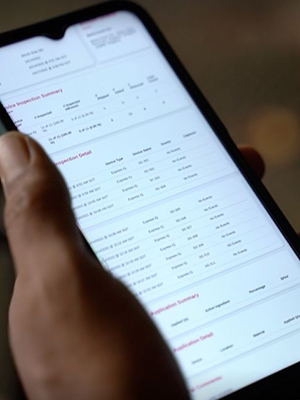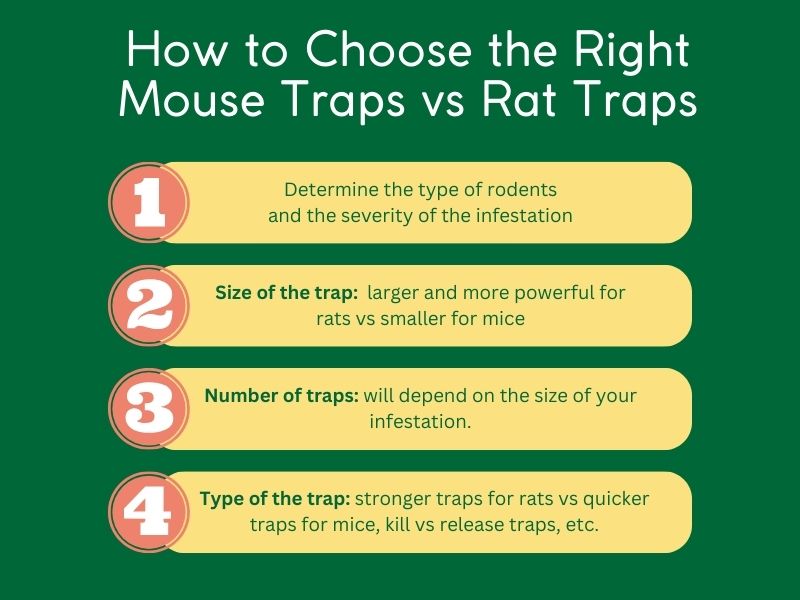The Complete Guide to Mouse and Rat Traps: How Do They Work

Having rats or mice in your home poses health risks to you and your family and can cause damage to your property. When it comes to dealing with rodents, mouse and rat traps are an effective solution. Let’s explore the benefits of using traps, how they work, and how to successfully catch mice and rats with commercial and DIY traps.
Benefits of Rat and Mouse Traps
The benefits of rat and mouse traps extend beyond convenience, as this is a safe and effective method to get rid of rodents in your home. Some of the key benefits include:
- Efficiency: Mouse and rat traps are highly effective in capturing rodents, providing a quick solution to infestations.
- Safety: Unlike some chemical methods, traps pose minimal risks to humans, pets, and the environment. They can be used in spaces where chemical solutions are not allowed.
- Cost-Effective: Traps are generally affordable and reusable, making them a budget-friendly option for rodent control.
Want to find out more about rodent control in Singapore?

How Do Rodent Traps Work
Rat and mouse traps use the principle of attracting the rodent with bait and triggering a mechanism to capture or kill the intruder. There are different types of traps, including snap traps, electronic traps, glue traps, and live traps.
- Snap Traps: These traditional traps use a spring-loaded mechanism, attracting rodents with food or nesting material. They are placed along rodent pathways and snap shut when the rodent takes the bait.
- Electronic Traps: These traps deliver a high-voltage shock when the rodent enters the trap.
- Glue Traps: Rodents get stuck to the adhesive surface of these traps, allowing for easy disposal.
- Live Traps: Designed for homeowners who want to catch mice or rats alive, these traps allow for relocation without harming them. They attract rodents with food and capture them inside the trap. After that, homeowners need to release rodents away from the property, so that rodents don’t find their way inside again.
Do Mouse Traps Work on Rats?
For a lot of people all rodents look similar, but due to the differences between rats and mice you need to adjust the extermination methods. While mouse traps can catch smaller rodents, they may not be effective for larger rats. It’s important to choose traps that are appropriately sized for the target species. Rat traps are larger and more powerful, ensuring successful capture.

Choosing the Right Mouse Traps vs Rat Traps
When selecting rodent traps, start by determining the type of rodent and the severity of the infestation. Some other factors to consider when choosing the mouse or rat traps include:
- Size of the trap – rat traps are typically larger and more powerful, while mouse traps are designed for smaller rodents.
- Number of traps – will depend on the size of your infestation.
- Type of trap – rats usually require stronger traps, while mouse traps need to capture mice quickly (e.g. using glue or snap traps). Consider if you want to kill rodents or release them after capturing, and choose traps with sensitivity adjustments for different rodent sizes.
DIY Rodent Traps
For those who prefer a do-it-yourself approach, there are several DIY mouse and rat traps that can be crafted using common household items. Examples include bucket traps, bottle traps, and paper tube traps. While these may not be as effective as commercial traps, they can provide a temporary solution in a pinch.
Where to Place Rat and Mouse Traps
For rodent traps to work, it is essential to place them in the right place. To get better results, follow these tips when placing the rat and mouse traps:
- Identify activity areas: Place traps where you notice signs of rodent activity, such as droppings, gnaw marks, or nesting sites.
- Along walls and baseboards: Rodents often travel along walls, so placing traps along their usual pathways increases the chances of success.
- In dark corners and crevices: Rodents prefer dark and hidden areas, making these ideal locations for trap placement.
Pro Tip: If you have a large rodent infestation, it might be necessary to consult with pest control experts.
Tips to Catch Rodents Successfully
Here are some additional tips on how to trap mice and rats successfully:
- Use the right bait that is attractive to rodents, such as peanut butter, chocolate, or seeds. Change the bait after several days if it doesn’t work.
- Check traps frequently, remove captured rodents promptly and reset traps to maintain effectiveness.
- Regularly move traps to different locations (once in 2-3 days) to increase the chances of capturing rodents.
- Increase your chances of success by using several traps simultaneously, especially in areas with high rodent activity. Install multiple traps in rodents’ “favourite” places.
- Be patient and persistent: rodent control may require time and multiple attempts. Adjust your strategy based on the effectiveness of your traps.
- Use other rodent prevention methods: ensure sanitation and proper food storage, remove debris and food spills, and seal the potential entry points.

Pest Problem? Let Us Help.
We offer fast and effective precision treatments to eliminate pests while ensuring a safe environment for your home or business.
Smart Rodent Control Strategy
Rat and mouse traps are effective tools against rodents, and placing them strategically can help successfully manage rodent infestations. In case of larger rodent infestations, it is worth consulting with pest control experts. They can handle rodent baits and traps professionally, and can also help you develop and implement an effective rodent monitoring strategy to prevent future infestations.
Author: Soleha Nisaa
Frequently Asked Questions
The best baits for mouse and rat traps are peanut butter, chocolate, nuts, seeds, dried fruit, and bacon. Experimenting with different baits can help determine what works best in your specific situation.
Check traps frequently, ideally every 12-24 hours, to ensure captured rodents are promptly removed and to prevent odor and contamination.
While mouse and rat traps are generally safe when used correctly, some traps can potentially cause injury if mishandled. Glue traps can also pose risks if children or pets get into contact with them.






